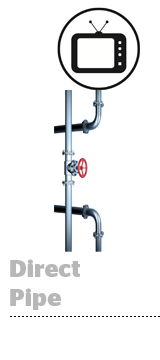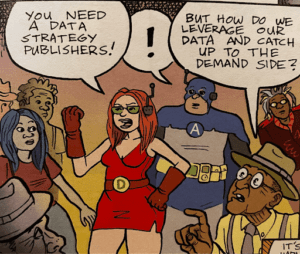 AudienceXpress, a TV planning and buying platform Comcast acquired last summer via its purchase of parent Visible World, is opening up new programmatic TV tools to several agencies, including Horizon and US International.
AudienceXpress, a TV planning and buying platform Comcast acquired last summer via its purchase of parent Visible World, is opening up new programmatic TV tools to several agencies, including Horizon and US International.
These tools include a self-serve platform and direct APIs, AudienceXpress’ first major product launch since the Comcast acquisition. The beta will last through the first quarter, and will be released generally in Q2.
“We published a spec that will give agency or DSP partners direct API-to-API connection to exchange data or information,” said Walt Horstman, president of AudienceXpress.
In other words, those partners will get easier access to AudienceXpress’ TV supply sources. It’s also intended to automate workflow, as the system plans and reports information back to buy siders.
“We think it’s a true advancement into programmatic TV,” he said, “because we’re taking most manual points out of the workflow.”
Self-serve buyers enter their requirements for a plan, upload their own data sets, select which networks they want to buy from and then automatically build a plan within minutes.
Horstman said AudienceXpress takes the TV planning process one step further than other platforms, which might stop at the discovery or audience indexing stage. Self-serve users can execute a buy through its platform and make ongoing tweaks to optimize the plan.
Horizon Media will be the first agency to hook into AudienceXpress using the new API connection.
“This allows us to bring our proprietary tools and data into the equation more seamlessly and fully automates the process from planning [on the agency side] through to on-air execution,” explained David Campanelli, SVP and director of national broadcast for Horizon.
The agency buyers’ biggest challenge was marrying client-side data with broadcaster or other third-party data sets, as well as reaching a scaled footprint in national inventory.
“One of the reasons we chose to partner with AX is their nearly full national footprint of inventory,” Campanelli added, “rather than it being a mix of local and national with geographies on the local side that might not match our client’s business needs.”
AudienceXpress has access to dynamically inserted ad inventory spanning 210 DMAs and more than 100 multichannel video programming distributors, telcos/satellite and cable companies. In addition, it’s working with 20-25 national cable networks.
There was a lot of movement in programmatic TV in 2015. Over the last 18 months, Horstman has seen the TV supply side become more receptive to buy-side demand for greater data and automation in the planning and buying process.
But the changing ecosystem is igniting some ongoing tension between managed service providers and agencies, particularly in TV.
“Ad tech companies using managed service approaches to providing a solution are starting to look and feel like agencies,” he said, and “that’s starting to create certain conflicts for an agency who has a planning team and a buying team responsible for maintaining relationships with inventory partners.”
That perception was one reason AudienceXpress saw the value of developing a self-serve interface. Additionally, some agencies wanted to bring their own and their clients’ data into their buys instead of using pre-packaged segments, which some view as commodities.
Self-serve capabilities are a key part of fully automating TV, Horstman argued, “because if we’re just creating a different version of an agency, that’s not actually adding any incremental value into the ecosystem.”











